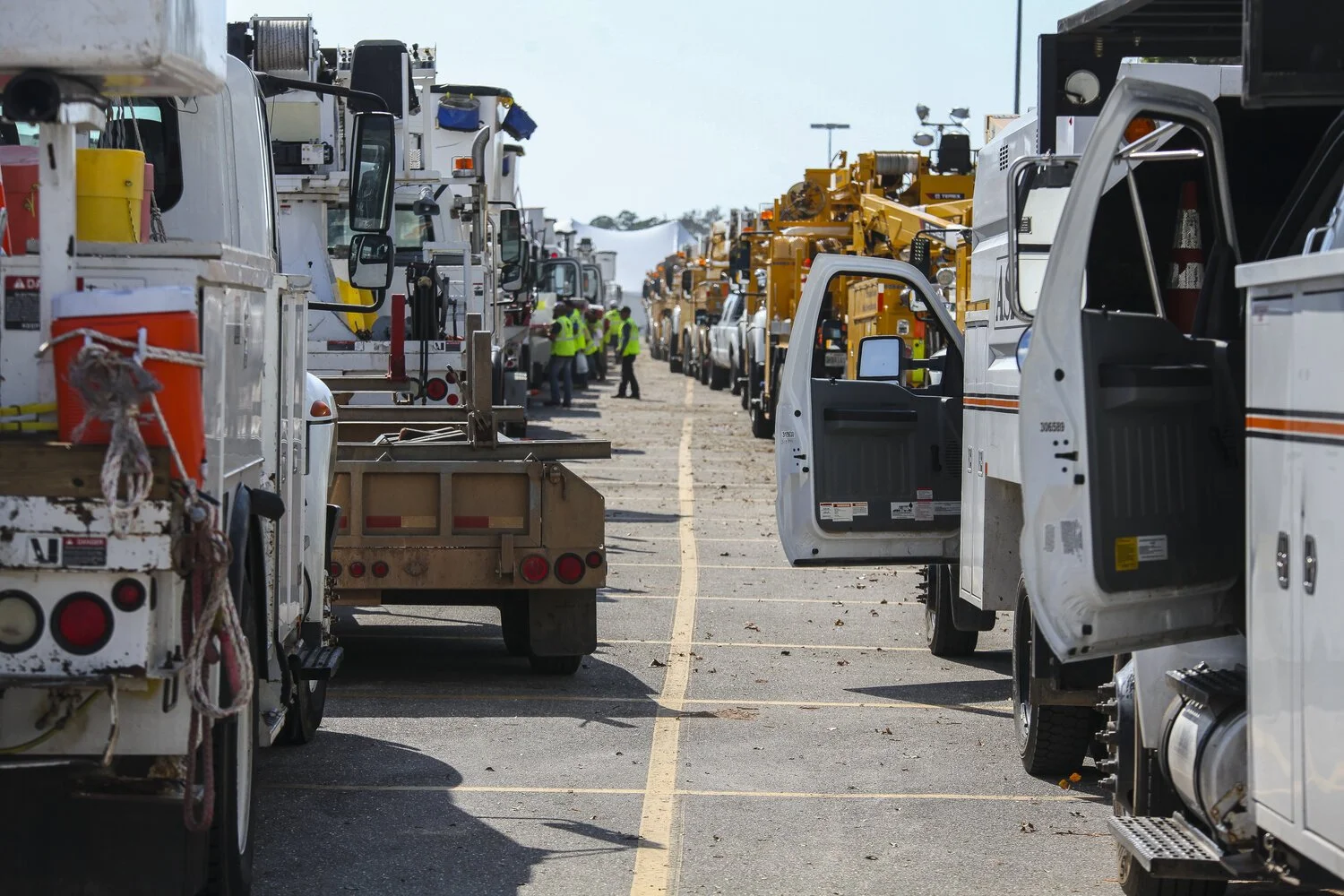INFRAMARKER RFID WEB WIDGET AVAILABLE ON ESRI'S MARKETPLACE
Berntsen International, the leader in infrastructure marking solutions, today announced that InfraMarker RFID Web Widget for ArcGIS Online is now available on the Esri Marketplace.
Utilities need better ways to locate, identify and update infrastructure asset records to fully benefit from the power of Esri’s ArcGIS tools. RFID marking of infrastructure assets directly addresses this issue by linking verified physical asset data to its specific record in ArcGIS Online. This prevents data inaccuracies while streamlining field asset maintenance.
MADISON, Wisc.— August 13, 2020 — Berntsen International, the leader in infrastructure marking solutions, today announced that InfraMarker RFID Web Widget for ArcGIS Online is now available on the Esri Marketplace.
Utilities need better ways to locate, identify and update infrastructure asset records to fully benefit from the power of Esri’s ArcGIS tools. RFID marking of infrastructure assets directly addresses this issue by linking verified physical asset data to its specific record in ArcGIS Online. This prevents data inaccuracies while streamlining field asset maintenance, improving field ROI and enhancing regulatory compliance.
Benefits of RFID marking of infrastructure assets —
Assurance of data accuracy — InfraMarker RFID tags provide a digital serial number that is specific to the RFID-enabled asset. The serial number provides an accurate validation of the ArcGIS asset data through the connection of the InfraMarker RFID Web Widget.
Complete data — Any type of asset (including underground) can be marked with durable, passive InfraMarker RFID tags. The Web Widgets tie the physical asset to its ArcGIS record and each RFID read is captured, producing an auditable asset record, enhancing regulatory compliance.
Improved ROI in the field — RFID directly benefits field staff by eliminating the time and guesswork involved in locating specific assets. A simple RFID read accesses the right information and presents the relevant data fields within the user’s Esri Online inspection and maintenance form. This streamlines operations while enhancing accuracy..
As an infrastructure marking company, Berntsen has been developing smart marking products for more than a decade. Its patented InfraMarker RFID solution combines the durability and precision of all Berntsen marking products with a unique application of RFID technology specifically developed to connect physical markers with digital records.
Berntsen’s partnership with Esri allows utilities to expand their use of ArcGIS by connecting physical asset and its data in ArcGIS. “Esri’s ArcGIS is used by utilities throughout the world to visualize, model and analyze their infrastructure assets. Berntsen’s InfraMarker RFID solution helps Esri’s customers get the most value out of ArcGIS,” said Mike Klonsinski, president of Berntsen International, Inc. “We look forward to introducing other RFID-compatible apps and software that help utility customers maximize their use of Esri platforms.”
Go to the Esri Marketplace to learn more about how InfraMarker RFID Web Widgets for ArcGIS online can improve utility operations.
About Berntsen International, Inc.
Berntsen has been a leader in the development and manufacture of infrastructure marking for nearly 50 years. We have been building that trust into every product we make, ensuring safety, precision and lasting quality for generations. From our advanced metallurgy and forging processes to our patented RFID-enabled smart marking apps, Berntsen is the world leader in marking solutions wherever precision and durability are essential.
InfraMarker.com | BerntsenInternational.com | Berntsen.com
InfraMarker is a registered trademark of Berntsen International, Inc.
About ESRI
Esri, the global market leader in geographic information system (GIS) software, location intelligence, and mapping, offers the most powerful geospatial cloud available. Since 1969, Esri has helped customers unlock the full potential of data to improve operational and business results. Today, Esri software is deployed in more than 350,000 organizations including the world’s largest cities, most national governments, 75 percent of Fortune 500 companies, and more than 7,000 colleges and universities. With its pioneering commitment to geospatial information technology, Esri engineers the most advanced solutions for digital transformation, the Internet of Things (IoT), and advanced analytics.
Visit us at esri.com.
Esri, the Esri globe logo, ArcGIS, The Science of Where, esri.com, and @esri.com are trademarks, service marks, or registered marks of Esri in the United States, the European Community, or certain other jurisdictions.
RFID Expedites Recovery
Disasters run the gamut, from environmental factors to cyber-threats to aging infrastructure. Keep in mind America receives an overall grade of D+ on the American Society of Civil Engineers Infrastructure Report Card, with the categories of drinking water, energy, and wastewater receiving a D or D+ mark.
Disasters Underscore Critical Need for Connected Utility Infrastructure
Digital Mapping Expedites Disaster Recovery, Has the Potential to Save Lives
On Sept. 14, 2018, Hurricane Florence slammed into the Carolinas, bringing with her powerful winds, torrential rains and the potential to wreak catastrophic destruction. Though Florence was downgraded to a Category 1 storm as it moved over land, its high winds and rain toppled trees, triggered massive flooding and caused power transformers to explode like fireworks, leaving hundreds of thousands of people without power. More than 40 people have died as a result of the storm and flooding.
A day earlier, 800 miles up the East Coast, another disaster had occurred. Dozens of rapid-fire gas explosions caused 70 home fires and one fatality in what one official described as “Armageddon.” Entire neighborhoods north of Boston were forced to evacuate, and firefighters and crews scrambled to fight the flames and shut off the gas and electricity to the affected areas. The fires were caused when too much natural gas was pumped into a section of pipe and then leaked into homes.
These disasters—and others including the California wildfires and Hurricanes Harvey and Irma—are a cogent reminder of the critical need to upgrade and digitize our utility infrastructure. This is especially relevant for all of us at Berntsen who live and work in Wisconsin, where a massive explosion destroyed a city block in downtown Sun Prairie and killed a volunteer firefighter in July. The fact that we design equipment that might have prevented this disaster and so many others saddens us, and this tragedy has deeply affected our employees.
Disasters on the Rise
Disasters run the gamut, from environmental factors to cyber-threats to aging infrastructure. Keep in mind America receives an overall grade of D+ on the American Society of Civil Engineers Infrastructure Report Card, with the categories of drinking water, energy, and wastewater receiving a D or D+ mark.
A 2017 report prepared by Johns Hopkins University notes that the U.S. insurance industry has identified a $20 to $55 billion annual financial loss from power outages caused by flooding, hurricanes, and extreme temperatures. A combination of “higher average global temperatures, more destructive storms, and hurricanes, and increased risk of wildfire will ultimately worsen risk exposure for utilities,” the report states.
Many public and private utilities have state-of-the-art asset management systems to tackle the challenge of disasters, but the widespread deployment of these systems is lacking in much of the country, putting communities and citizens at greater risk. Over time, failure to adopt digital technologies will lead to slower disaster recovery times, potentially greater loss of life and bigger financial losses to business and the public.
“Over time, failure to adopt digital technologies will lead to slower disaster recovery times, potentially greater loss of life and bigger financial losses to business and the public. ”
The good news is digital transformation is coming to the utility industry and innovative technologies already exist to improve disaster planning, response, recovery, and underground asset management.
Connected Marking and Digital Mapping Are a Game Changer
Disasters such as storms, wildfires, explosions, and earthquakes often require gas, water, electric and telecommunications companies to quickly identify, locate and access underground utility assets.
In August 2017, a major fiber network outage in Atlantic Canada shut down cellphone and Internet service, closed some bank branches and delayed flights at multiple airports. The problem was caused when two fiber optics lines were cut during construction work.
The ability to quickly locate and repair underground utility assets is often hampered by outdated maps and inaccurate data. During a disaster, these delays can be devastating and deadly.
Connected marking solutions for utility infrastructure such as the InfraMarker® system from Berntsen International are a game changer for asset management and extremely helpful in disaster recovery. In a disaster, utility crews can use the InfraMarker mobile app and digital mapping software to quickly find the exact location of a gas pipeline shut-off valve to prevent an explosion. It’s that powerful.
This unique combination of RFID, mobile app and digital mapping software significantly expedites underground utility locating.
InfraMarker is a secure and easy way to collect and relay essential utility asset data. From there, the data can be accessed on smartphones and by popular GIS systems such as ArcGIS. Going forward, connected marking solutions will play an integral role in Smart City utility asset management.
In the past, the most important part of infrastructure management was to locate the asset. Today, infrastructure management requirements are greater and more complex. Location and other relevant data need to be available to multiple users faster—ideally in real-time—and to be integrated with GIS, ERP, workflow management and regulatory/compliance systems.
RFID is a highly effective tool for precision locating. But the key advantage of connected marking is the ability to collect, store and share asset data via the cloud. This next-gen innovation delivers exceptional benefits and ROI to utility asset managers, emergency responders, and citizens, and also has the potential to save lives.












